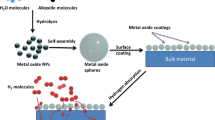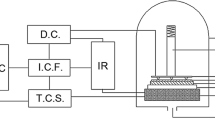Abstract
Hydrogen is a reliable energy vector and its storage is strongly connected to the costs, performance and level of safety of the storage system components. Several materials for physical and chemical hydrogen storage have been proposed, but few research works were devoted to polymers, that generally are low cost and weight materials, easy to be managed and manufactured. In this work, a functionalised Poly(ether ether ketone) (PEEK) polymer was studied and chosen as a base polymeric matrix with the aim to produce both a low cost and low weight hydrogen storage material. The polymer was in situ functionalised starting from a manganese oxide precursor. The obtained oxide, bonded to the polymer chain, allows the hydrogen storage. In this work, the functionalisation process and preliminary results of the hydrogen storage capability are reported.
From Scanning Electron Microscopy (SEM) and surface area measurements (BET), it has been verified that the metallic compound introduction modifies the morphology of the material, supplies an increased surface area for hydrogen chemisorption, revealing a 1.2%wt/wt hydrogen adsorption capability at 77 K. Preliminary results by Gravimetric Hydrogen Absorption measurements show that by increasing the temperature, the hydrogen storage capability is reduced and a value of 0.3%wt/wt at 50°C and 80 absolute bar was obtained. The reversibility cycles of hydrogen adsorption-desorption seem to be confirmed. For this reason such approach has been considered as a promising pathway and deeper studies are in progress.
Similar content being viewed by others
References
A. Züttel, “Hydrogen storage and distribution systems”, Mitig Adapt Strat Glob Change, 12 343 (2007).
W.R. Schmidt Hydrogen storage in polymer-dispersed metal hydrides (PDMH), Proceedings of the 2001 DOE Hydrogen Program Review NREL/CP-570-30535.
H. Fujii T. Ichikawa “Recent development on hydrogen storage materials composed of light elements”, Physica, B383 45 (2006).
J. Germain J. Hradil J.M.J. Fre’chet, F. Svec “High Surface Area Nanoporous Polymers for Reversible Hydrogen Storage”, Chem. Mater., 18 4430 (2006).
S.J. Cho K. Choo D.P. Kim J.W. Kim “H2 sorption in HCl-treated polyaniline and polypyrrole”, Catal. Today 120 336 (2007).
B. Panella L. Kossykh U. D. Weglikowska M. Hirsher G. Zerbi S. Roth “Volumetric measurement of hydrogen storage in HCl-treated polyaniline and polypirrole”, Synthetic metals, 151 208 (2005).
F. H. B. Lima M. L. Calegaro E. A. Ticianelli “Electrocatalytic activity of manganese oxides prepared by thermal decomposition for oxygen reduction”, Electrochimica Acta, 52 3732 (2007).
A. Carbone R. Pedicini G. Portale A. Longo L. D’Ilario, E. Passalacqua “Sulphonated poly(ether ether ketone membranes for fuel cell application: Thermal and structural characterization”, Journal of Power Sources, 163 18 (2006).
Author information
Authors and Affiliations
Rights and permissions
About this article
Cite this article
Pedicini, R., Squadrito, G., Giacoppo, G. et al. A Novel Polymeric Approach by Utilizing Functionalized Poly(ether ether ketone) for Hydrogen Storage Applications. MRS Online Proceedings Library 1216, 309 (2009). https://doi.org/10.1557/PROC-1216-W03-09
Received:
Accepted:
Published:
DOI: https://doi.org/10.1557/PROC-1216-W03-09




